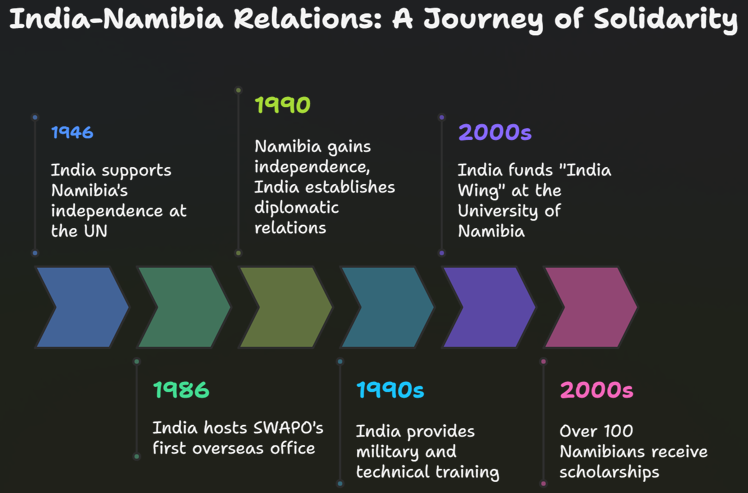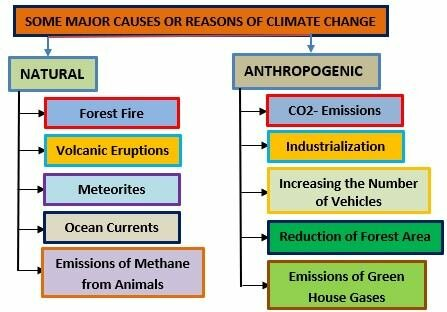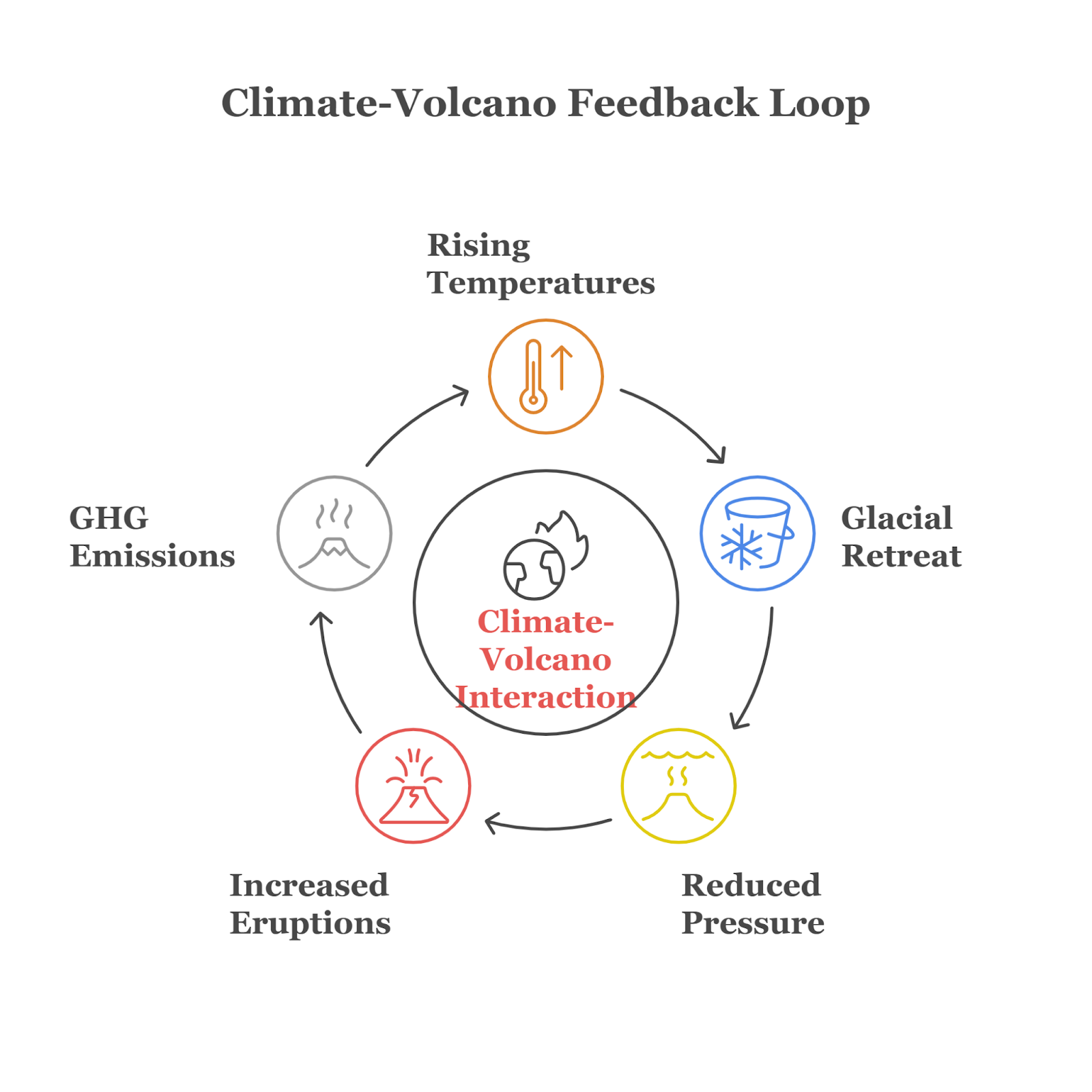Daily Current Affairs 10th July 2025
Welcome to today’s current affairs update, where we bring you key global and national developments in climate policy, technology, diplomacy, agriculture, and geography. From India’s growing strategic partnerships in Africa to breakthroughs in gene editing and rising concerns over climate-linked natural disasters, here are the major topics covered:
1) UN Climate Negotiation Process Losing Credibility
2) Surface-Level Innovation to DeepTech Leadership
3) India-Namibia Ties Deepen with PM Modi’s Landmark Africa Visit
4) Gene Editing in Japonica Rice
5) Climate Change and Volcanic Eruptions
6) Places in News: Argentina
7) Places in News: Ghana
UN Climate Negotiation Process Losing Credibility
Reforming UNFCCC process
Context: The UN Framework Convention on Climate Change (UNFCCC), the body that oversees international climate negotiations, is facing a credibility crisis.
What is the Present Status?
- Elusive Progress: Despite years of talks and agreements, meaningful progress to restrict global warming remains elusive.
- No Accountability: Many developed nations have not met their climate targets, and worse, haven’t been held accountable.
- Sidelined Issues: At the same time, developing and vulnerable countries, especially small island states, complain that their calls for climate justice are being sidelined.
- US Exit: To make matters more complex, the United States’ exit from the climate process after Donald Trump’s return to the White House has raised concerns about the long-term viability of the entire system.
Why is COP30 in Brazil Crucial for Rebuilding Trust?
- The upcoming COP30 climate summit, to be hosted by Brazil in November, is now being viewed as a critical moment for course correction.
- Brazil is actively engaging with other nations to rebuild trust in the multilateral process, and to push for reforms in how the UNFCCC functions.
- Leading up to COP30, the mid-year Bonn Climate Conference (June 2025) saw intense discussions among country delegations, climate experts, and civil society groups.
- The aim was to explore practical and systemic reforms to restore credibility.
What Reforms Were Discussed at the Bonn Climate Conference?
- Expanding Scope: The Bonn conference recognised that the expanding scope and increasing complexity of negotiations were making the UNFCCC process difficult to manage.
- Proposals: Countries floated proposals such as streamlining agenda items to remove overlap, limiting speech durations to allow more negotiation time and reducing delegation sizes to enable more equitable participation.
- No Decisions Reached: However, these proposals were seen as incremental rather than transformational, and no concrete decisions were reached.
- These discussions will continue at COP30 in Brazil.
What Are Civil Society Groups Demanding from the UNFCCC?
More than 200 civil society organisations submitted a joint letter during the Bonn talks demanding structural changes to the negotiation process. Their key proposals included:
- Introducing majority-based decision-making to break negotiation deadlocks, replacing the current consensus-based system that allows every country a de facto veto.
- Disqualifying countries with poor climate records from hosting COP summits.
- Limiting the presence of fossil fuel lobbyists and polluting industries at climate summits to reduce undue influence.
- However, adopting any of these proposals would require consensus — ironically, the very system under scrutiny.
What Is Brazil’s Role in Shaping the Future of Climate Talks?
- As COP30’s host, Brazil is expected to take leadership in guiding discussions and delivering trust-based outcomes.
- In a letter addressed to UNFCCC parties, Brazil acknowledged procedural issues like: overlapping agenda items, barriers for small country delegations and scheduling bottlenecks.
- Brazil also proposed mainstreaming climate dialogue across other UN agencies, financial institutions, and even suggested the formation of complementary multilateral mechanisms to ensure implementation of climate decisions.
- Additionally, Brazil outlined 30 priority items to expedite climate action in collaboration with global partners.
Why Is Climate Finance a Key Concern for Developing Countries?
- Commitment: Under the Paris Agreement, developed countries had committed to mobilising $100 billion annually to support climate action in poorer nations. But actual delivery has fallen far short.
- Estimates: Developing countries require $1.3 trillion annually for climate mitigation and adaptation.
-
- Developed nations have agreed to just $300 billion per year, and that too starting from 2035.
- Growing Frustration: At the Bonn meeting, developing countries stalled discussions, compelling a special meeting on finance — though it ended without resolution.
What Is the BRICS Stand on Climate Finance?
At its recent summit in Brazil, BRICS nations (now a 9-member group) released a climate finance declaration urging developed countries to:
- Fulfil their existing commitments under the UNFCCC and Paris Agreement.
- Increase adaptation finance to help vulnerable countries tackle the effects of climate change.
- Their collective stance adds to the mounting pressure on industrialised nations ahead of COP30.
Surface-Level Innovation to DeepTech Leadership
Fostering innovation from business models to DeepTech
Context: A few months ago, Commerce and Industry Minister Piyush Goyal sparked a national debate by comparing Indian startups with their Chinese counterparts.
More on News
- While some in the startup community found the remarks provocative, they underscored an important truth — India must now move beyond surface-level innovation and focus on DeepTech, the next frontier of technological advancement.
How Has India’s Startup Ecosystem Evolved So Far?
- Business Model Innovation: India’s startup growth story has so far been powered by business model innovation.
- From food delivery apps and e-commerce platforms to fintech and the gig economy, Indian startups have redefined service delivery and consumer experience.
- Rely on Existing Technology: However, these models largely rely on existing technologies and repackaging rather than building from scratch.
- DeepTech Focus: To take a global lead, the time has come to focus on DeepTech — technologies grounded in scientific breakthroughs, core engineering, and long-term R&D.
What Exactly is DeepTech and Why Does It Matter?
- DeepTech goes beyond buzzwords like AI, IoT, drones, and robotics.
- It includes foundational domains like material science, power electronics, advanced manufacturing, and molecular drug discovery — the bedrock for transformative innovation in energy, mobility, healthcare, and AI hardware.
- For instance, material science makes drones both lightweight and durable.
- Battery innovations in China stem from early investments in core chemistry and engineering, not just assembling parts.
- DeepTech is not about repurposing existing solutions. It demands original thought, high-risk experimentation, and scientific rigor.
What Does It Take to Build a DeepTech Ecosystem?
- Why is a Product Mindset Critical?: India still lacks globally recognised homegrown products across sectors — whether medical, industrial, telecom, or even software, despite our strength in IT services.
- Unlike China, which began by reverse engineering and gradually built original R&D-driven products, India hasn’t yet nurtured a strong product creation culture.
- Why is R&D Culture the Missing Link?: DeepTech success requires hands-on technical founders with domain expertise.
- Icons like Bill Gates, Larry Page, and Elon Musk built companies rooted in engineering acumen, not just managerial vision.
- A robust R&D culture encourages long-term problem solving and genuine innovation, often with multiple failures before success.
- Is Technical Depth Being Taught in Classrooms?: India’s engineering education is still tool-focused rather than fundamentals-first.
- Concepts like closed-loop control systems, mathematical modelling in AI, or robotics from first principles are taught in only a few premier institutions like IITs. Most colleges train tool users, not tool creators.
- Inspired by global models like MIT or Stanford, Indian institutions must pivot to core theory, multidisciplinary learning, and problem-based project work.
- Can Academia and Industry Collaborate More Effectively?: Real innovation often lies at the intersection of disciplines.
- In the U.S., initiatives like DARPA’s robotic challenges have triggered significant DeepTech breakthroughs through academic-industry partnerships.
- India needs similar initiatives to foster real-world applications and co-development between universities and companies.
- How Can the Government Catalyse DeepTech Growth?: Current government support often lacks flexibility.
- Institutions like NRDC impose rigid criteria — for instance, restricting grants to startups within incubators, ignoring founder expertise or R&D maturity.
What India Needs?
- Shared infrastructure like fabrication labs, test centres, and prototyping facilities.
- Policy flexibility to support ventures based on innovation quality, not location.
- Funding mechanisms that support long-gestation DeepTech cycles, not just quick-scale startups.
What Must Change to Make India a DeepTech Powerhouse?
To emerge as a global DeepTech leader, India must undertake systemic reform across its entire innovation ecosystem:
- Founders must move beyond managerial skills to deep technical problem-solving.
- Educational institutions must foster fundamental understanding, interdisciplinary learning, and real-world experimentation.
- Government policies must be agile, inclusive, and aligned to the unique needs of DeepTech startups.
India-Namibia Ties Deepen with PM Modi’s Landmark Africa Visit
India-Namibia Engagement Expands as Modi’s Africa Focus Sharpens
Context: Recently , Prime Minister Narendra Modi arrived in Namibia, marking the final stop of his five-nation outreach tour to the Global South. This landmark visit is the first by an Indian Prime Minister to Namibia in nearly thirty years, underscoring a renewed diplomatic push towards Southern Africa.

What is the significance of PM Modi’s visit to Namibia in 2025?
Historic and Strategic Milestone
- This is the first Indian Prime Ministerial visit to Namibia in nearly three decades, with the last visit by PM Atal Bihari Vajpayee in 1998.
- It represents a strategic reset in bilateral relations, with an emphasis on energy security, digital diplomacy, and critical minerals.
- The visit is the culminating leg of Modi’s five-nation Africa tour, reaffirming India’s long-standing political support for African independence movements—especially its role in Namibia’s liberation from South African rule.
Why does Namibia matter to India?
Critical Minerals, Energy, and Trade Nexus
Namibia is central to India’s efforts to secure supply chains for clean energy technologies. Specifically:
- 3rd largest uranium producer (after Kazakhstan and Canada), critical for India’s nuclear energy targets under the Nuclear Power Programme 2031.
- Rich in lithium, cobalt, and rare earth elements (REEs) used in solar panels, EV batteries, semiconductors.
- Producer of high-quality marine diamonds, with potential for direct India–Namibia trade, bypassing intermediaries like Antwerp.
- Case Study: Indian diamond companies already operate in Namibia. Direct trade agreements will reduce procurement costs, helping India’s Surat-based diamond industry.
What are the expected key outcomes and agreements from the 2025 visit?
-
- Strategic Resource Cooperation: Revival of the 2009 uranium supply agreement to support India’s civil nuclear energy program.
- Formation of a Critical Minerals Partnership for joint exploration, investment, and R&D in cobalt, lithium, and REEs.
- Strategic Resource Cooperation: Revival of the 2009 uranium supply agreement to support India’s civil nuclear energy program.
- Digital Public Infrastructure (DPI) Diplomacy: Launch of Unified Payments Interface (UPI) in Namibia in collaboration with the Bank of Namibia and NPCI International.
- Introduction of other DPI tools such as DigiLocker and Aadhaar-linked services to promote financial inclusion and e-governance.
- Data Point: According to the Ministry of External Affairs (MEA), India–Namibia trade in 2023–24 stood at $814 million, with Indian FDI exceeding $800 million, mostly in mining.
- Introduction of other DPI tools such as DigiLocker and Aadhaar-linked services to promote financial inclusion and e-governance.
- Defence and Training Cooperation: Indian Air Force Technical Team stationed in Namibia since 1996 trains Namibian helicopter pilots.
-
- Namibia participates in:
- AFINDEX (India–Africa Field Training Exercise)
- Namibia participates in:
-
-
- India–Africa Defence Dialogue
-
- Educational and Capacity Building MoUs: Expansion of ITEC training programs.New institutional partnerships between Indian universities and Namibian research centers.
How does the Cheetah Reintroduction symbolise the India–Namibia partnership?
Environmental Diplomacy in Action
- In 2022, India successfully reintroduced 8 cheetahs from Namibia to Kuno National Park under Project Cheetah.
- This was the first intercontinental translocation of a large carnivore, symbolising shared commitment to biodiversity conservation and scientific cooperation.
- The collaboration aligns with India’s obligations under the Convention on Biological Diversity (CBD) and its 2023 National Biodiversity Action Plan.
What role do Indian-origin communities play in Namibia?
- Diaspora as Economic Connectors: Roughly 450 Indians (NRIs and PIOs) reside in Namibia.
-
- Involved in retail, logistics, hospitality, and education, they contribute to economic diplomacy.
- The India–Namibia Chamber of Commerce and Industry serves as a platform for bilateral business promotion.
- Cultural Engagement: India organises film festivals, yoga events, and art exchanges through the ICCR and the Indian High Commission.
-
- Namibia is part of India’s Focus Africa cultural strategy, promoting people-to-people ties.
Gene Editing in Japonica Rice
NIPGR’s gene-edited japonica rice shows increased phosphate uptake, 20% more yield
Context: Scientists at the National Institute of Plant Genome Research (NIPGR), Delhi, have successfully used CRISPR-Cas9 gene editing to enhance phosphate uptake in japonica rice (Nipponbare), leading to higher yields without compromising seed quality.

What Was the Objective of the Study?
- To improve phosphate absorption in rice plants, phosphorus is crucial for growth, but it is often absorbed inefficiently.
- To increase crop yield under low-phosphate conditions by modifying phosphate transporters.
Mechanism of Phosphate Transport Enhancement:
- Targeted gene: OsPHO1;2 (phosphate transporter) that moves phosphorus from roots to shoots.
- A repressor gene (OsWRKY6) was identified, which limits phosphate uptake.
- CRISPR-Cas9 was used in two ways:
-
- Complete knockout of OsWRKY6 → Initially reduced plant health (unintended side effects).
- Precise removal of the repressor’s binding site (30 base pairs) → Improved phosphate transport without harming other functions.
Importance of Phosphorus in Agriculture
- Phosphorus is vital for plant growth and development. Low phosphorus availability causes drastic reductions in crop productivity.
- Only 15–20% of applied phosphate fertilisers are taken up by plants; the rest is lost via leaching or runoff.
- In alkaline soils, phosphate forms complexes with calcium/magnesium; in acidic soils, it forms complexes with iron/aluminium, making it insoluble and unavailable to plants.
Key Findings of the Study
- Increased Yield Under Low-Phosphate Conditions:
- 20% higher yield when using 100% recommended phosphate fertiliser.
- 40% higher yield with just 10% of the recommended phosphate dose (compared to control plants).
- Root-Level Efficiency Improvements: Even though only the shoot promoter was edited, root transporters absorbed more phosphate. Roots acted as a “sink”, absorbing phosphate before it formed insoluble complexes (with calcium, magnesium, iron, or aluminium).
Overview of Japonica Rice
- Botanical Name: Oryza sativa L.
- A variety of Oryza sativa belonging to the sinica (japonica) rice family.
- Grain Type: Short to medium grain — rounder, thicker, and stickier than most rice varieties.
- Japonica rice evolved to thrive in cooler climates, making it vital for regions outside the tropical belt.
- Countries growing rice under temperate conditions include: Japan, South Korea, Russia, USA, Chile, Australia, Uzbekistan, Hungary, and others.
- Growth Environments: Includes irrigated, rainfed lowland, deep water, upland, and tidal wetlands.
- High Water Demand: Rice requires 2–3x more water than other cereals.
- Transplanted Rice Systems: Average 2,500 litres of water needed to produce 1 kg of rough rice.
- Amylose Content: Low (0%–20%), making the grains moist and sticky after cooking.
Implications for Indian Agriculture
- Current Dependency: India imports ~4.5 million tonnes of DAP fertiliser annually
- Soil Challenges: Many Indian soils are phosphorus-deficient.
- Potential Benefits: Reduced fertiliser use lowers costs for farmers and supports environmental sustainability.
- Next Step: Replication in indica rice varieties, which are more commonly grown in India.
Climate Change and Volcanic Eruptions
MELTING GLACIERS CAN LEAD TO MORE VOLCANIC ERUPTIONS
Context: A new geological study warns that rapid glacier and ice cap melting due to climate change could unleash hundreds of explosive volcanic eruptions globally.

Which regions are at the greatest risk?
- The findings suggest that regions such as West Antarctica—which harbours approximately 100 volcanoes buried under thick ice—are at the highest risk.
- Other vulnerable regions include parts of North America, New Zealand, and Russia, according to Pablo Moreno-Yaeger of the University of Wisconsin-Madison in the United States.
What is the link between climate change and volcanic activity?
- The idea that melting ice can influence volcanic activity dates back to the 1970s. The basic mechanism lies in how ice sheets exert immense pressure on underground magma chambers.
- When glaciers or ice caps melt, this pressure is relieved, allowing magma and underground gases to expand, increasing the likelihood of explosive eruptions.
- Historical evidence supports this connection. During the last major deglaciation period in Iceland, which occurred between 15,000 and 10,000 years ago, volcanic eruption rates were 30 to 50 times higher than they are today.
- Additionally, a decrease in pressure not only makes eruptions more likely but can also trigger the production of magma, as rocks melt at lower temperatures when held under reduced pressure.
What does the new study from Chile reveal about past and future volcanic activity?
- The study, presented at the 2025 Goldschmidt Geochemistry Conference in Prague, focused on the Mocho-Choshuenco volcano in Chile.
- Methodology: Researchers used radioisotope dating of volcanic rocks and mineral analysis to determine the age, depth, and formation temperature of eruptions before, during, and after the last Ice Age.
- Key Findings:
- 26,000–18,000 years ago: Volcanic activity was suppressed due to the 1,500-meter-thick Patagonian Ice Sheet.
- Around 13,000 years ago: As the ice melted, eruption frequency and explosiveness increased sharply.
- The magma had become more viscous from long underground buildup, making eruptions more violent when finally released.
- This evidence shows that deglaciation not only increases eruption frequency but also alters magma composition, increasing the hazard potential.
How can volcanic eruptions influence the climate?
- Volcanic eruptions have dual effects on the global climate:
- Short-Term Cooling: Eruptions release ash and sulphur dioxide (SO₂). These particles block sunlight and form sulphuric acid aerosols, which can remain in the stratosphere for up to three years, leading to temporary global cooling.
- Long-Term Warming: Sustained eruptions emit greenhouse gases like carbon dioxide (CO₂) and methane (CH₄). These gases contribute to global warming, potentially creating a vicious feedback loop.
- This self-reinforcing cycle could significantly amplify the impacts of anthropogenic climate change, making mitigation more difficult.

What does this mean for climate models and policymaking?
- Current climate models often exclude geological processes like volcanism, leading to an underestimation of risk.
- Key takeaways for policymakers and scientists:
- Volcanism must be integrated into climate projections and risk assessments.
- Glaciated volcanic regions should be monitored more closely.
- Preparedness plans for volcanic hazards must be updated to include climate-induced triggers.
Way Forward
- Interdisciplinary Research: Geologists, climatologists, and policy experts must collaborate to study volcanic systems in glacial regions.
- Global Monitoring: Enhanced satellite and seismic monitoring of volcanoes under glaciers.
- Climate-Responsive Hazard Planning: Governments must factor volcanic threats into disaster management and climate adaptation strategies.
- Public Awareness and Education: Volcanism is a lesser-known risk of climate change; public awareness is essential for support and preparedness.
Places in News: Argentina
PM Modi, Argentine President Milei agree to diversify bilateral trade basket
Context: In July 2025, Prime Minister Narendra Modi arrived in Buenos Aires for a two-day bilateral visit, the first by an Indian PM to Argentina in 57 years. This visit, part of his ongoing five-nation diplomatic tour, marks a significant standalone effort to strengthen bilateral ties, distinct from his 2018 G20 Summit trip.

About Argentina:
- Official Name: Argentine Republic
- Capital: Buenos Aires
- Currency: Argentine Peso (ARS)
- Located in southern South America. Argentina lies in both the Western and Southern Hemispheres.
- It is bounded by Chile and the Andes Mountains to the west, Bolivia to the northwest, Paraguay to the north, Brazil to the northeast, Uruguay and the South Atlantic Ocean to the east, and the Drake Passage to the south.
- Elevation Extremes:
- Highest Point: Cerro Aconcagua – 6,962 m (Mendoza Province) – Highest in Western Hemisphere
- Lowest Point: Laguna del Carbón – -105 m (Santa Cruz Province) – Lowest in Western Hemisphere
-
Major Water Bodies:
- Rivers: Paraná, Uruguay, Paraguay, Pilcomayo, Bermejo, Salado
- Lakes:
- Lake Mar Chiquita (largest salt lake; in Córdoba)
- Lake Argentino (largest overall lake; in Patagonia)
- Climate: Mostly temperate, Arid in the southeast, Subantarctic in the southwest.
- Natural Resources: fertile plains of the pampas, lead, zinc, tin, copper, iron ore, manganese, petroleum, uranium, arable land
Places in News: Ghana
India not just a partner but co-traveller in Ghana’s development journey: PM Modi
Context: In July 2025, Prime Minister Narendra Modi visited Ghana, marking the first Indian prime ministerial visit to the country in three decades. The visit is part of PM Modi’s five-nation tour aimed at strengthening bilateral ties.

About Ghana:
- Official Name: Republic of Ghana
- Capital: Accra
- Official Languages: English, Akan, Moshi-Dagomba, Ewe, Ga
- Money: Cedis (GHC)
- Location: A country in West Africa, located in the Northern Hemisphere.
- The Prime Meridian passes through Ghana.
- Ghana is bordered by Côte d’Ivoire (Ivory Coast) to the west, Burkina Faso to the north, Togo to the east, and has a southern boundary along the Gulf of Guinea and the Atlantic Ocean.
- Major Mountain Ranges: Mount Afadjato (885 metres) – Highest point in Ghana, Mount Djebobo (876 metres), Mount Torogbani (872 metres)
- Ghana’s drainage system is dominated by the Volta River basin, which includes Lake Volta and its major tributaries—the Black Volta, White Volta, and Oti rivers.
- Other significant rivers like the Pra, Ankobra, and Tano flow directly south into the Atlantic Ocean, originating from the watershed of the Kwahu Plateau, which separates them from the Volta system.
- South of Kumasi lies Lake Bosumtwi, Ghana’s only true natural lake, formed in a meteorite impact crater and with no outlet to the sea.
- Climate: tropical; warm and comparatively dry along southeast coast; hot and humid in southwest; hot and dry in north.
- Natural Resources: gold, timber, industrial diamonds, bauxite, manganese, fish, rubber, hydropower, petroleum, silver, salt, limestone.
Subscribe to our Youtube Channel for more Valuable Content – TheStudyias
Download the App to Subscribe to our Courses – Thestudyias
The Source’s Authority and Ownership of the Article is Claimed By THE STUDY IAS BY MANIKANT SINGH



